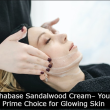Did you know that the automotive tinting film market is estimated to be $5.76 billion by 2030?
Heat, glare, and UV rays can turn a good drive into a bad day behind the wheel. This is where car window tinting can save the day.
There are different window tint levels, and which one you choose depends on your preference and location. Choose the wrong one, and you may end up with an expensive ticket, getting your car repainted, or both.
Use this guide to learn about the different types of window tints and which one is the best choice for your vehicle. Read on to learn more.
Different Levels of Window Tint
There are a variety of different levels of car tint available, ranging from light tint, medium tint, to dark tint. Each with its own advantages and disadvantages.
Light Tint
A light tint will block a maximum of 20% of sunrays and make the windows appear almost completely clear. This type of tint is ideal for those who wish to slightly reduce sun glare, maintain visibility, and increase privacy. Light tint car window tint is also quite popular because it does not drastically change the look of the vehicle.
With light tint, you are looking for something that gives you a good degree of privacy while allowing natural light to filter through. Most light tints are in the 5 to 25% VLT (Visible Light Transmission) range. The 20 to 25% range is popular because it gives a good balance of privacy and still allows for plenty of natural light.
Medium Tint
Medium tint provides a balance between privacy and visibility. It allows you to enjoy the benefits of window tint without blocking all of the light or privacy.
This tint has a VLT of around 35%. This allows around 35% of light to pass through the window tint, providing a visible level of darkness.
Additionally, they have UV rejection rates of approximately 85%. This provides excellent protection against sun-related health risks and premature fading of your personal items.
Dark Tint
Dark tint allows as little as 5 percent of visible light transmission. This makes it nearly impossible for outside observers to see into the vehicle, providing added privacy.
It can block up to 99% of the sun’s harmful UV rays, providing excellent protection from the elements. Darker tints are often used to boost the aesthetic appeal and level of security in cars. This tint could potentially block too much sunlight and impair the driver’s vision, so use caution when considering this option.
How to Choose the Right One
If you’re looking to add a sense of privacy or to upgrade the look of your car, window tinting can be a great way to go. Depending on your desired effect, the right window tint can help reduce the sun’s heat and glare, create a sleek finish, and provide a level of privacy. Here are a few tips to consider when choosing the right window tint for your car.
Understand Your Local Window Tinting Laws
Each state has different window tint regulations, so it’s important to make sure you check out these rules before selecting a window tint. Generally speaking, front windshields can have a tint that has a windshield film that is non-reflective and is at least 70% light transmittance.
Rear windshields can also have a tint that is not more than 24% reflective. Side windows, however, require tint that allows at least 43% of visible light transmission.
Additionally, it’s important to refer to your local regulations for restrictions on types of tint films available for windows other than the front and rear windshields. Taking these steps can help ensure that you are compliant with state regulations while also allowing you to pick the right window tint for your car.
Consider Durability and Longevity
When choosing window tints, it is important to consider durability and longevity. Clear topical-coated window tints are the most durable because the top coating layer prevents UV rays and scratches.
Tints can also be composed of metalized polyester-laminated films and dye-infused polyester films. This acts as a shield against damaging rays as well but may need to be replaced more often than clear-coated films.
Additionally, shoppers should opt for tints with a warranty that will cover fading, bubbling, or even bad installations for several years. Before making a purchase, read reviews and consider the shop’s installation warranty. With a little research and thorough shopping, window tint shoppers can be confident in their choice.
Find an Experienced Tinting Professional
If you’re choosing a window tinting service, it’s important to find someone experienced in tint installation. An experienced tint professional will be able to help you choose the right window tint for your needs and provide a quality installation.
They will be able to explain the advantages and disadvantages of each type of window tint. They can also recommend a tint that can block UV rays, enhance the look of your car, and improve the visibility of the glass while still being legal and safe.
They will also provide guidance on the best way to care for your tint to keep it in good condition and make sure it lasts. Working with an experienced professional will give you peace of mind that the job will be done right.
Consider Your Budget
Depending on the type of window tint you choose, the cost can vary widely. Budget-friendly window tint tends to offer basic or simple protection for your vehicle’s interior.
High-end window tint can offer more advanced features like better UV protection or a higher heat reduction. It can also provide a more stylish look to your car.
If your budget is more limited, you may want to look into a more basic option. If you have the funds, a higher-end option may be more beneficial.
In addition to the cost of the window tint itself, you may need to consider the cost of installation. Different types of window tint may require different installation procedures, which can add to the overall cost.
The Perfect Window Tint Levels for Your Car
Having the right tint for your vehicle windows can be a great investment for protecting your privacy as well as your car. Different levels of tint provide varied levels of protection, so it is important to pick the one that best suits your individual needs. Make sure you research your laws and decide on which window tint levels are the best for you. To ensure you make the best decision, contact your local tint shop and get their professional opinion






